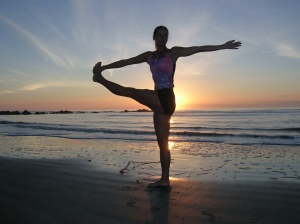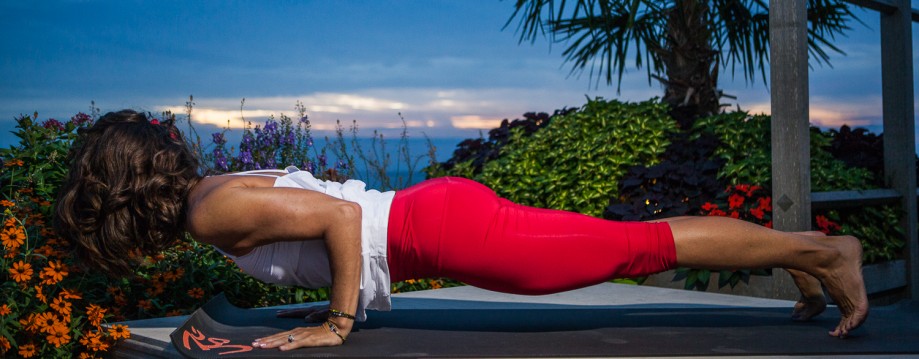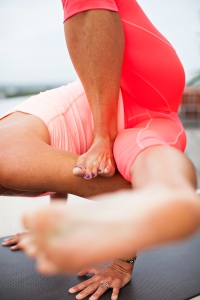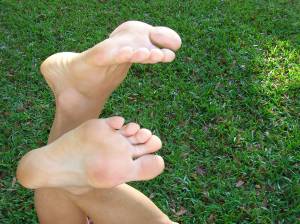Have you ever found yourself pushing against a door and it won’t open because it’s a door you pull- not push? Do you find yourself chuckling when you realize there’s a sign right in front of you – “PULL”? I find people behave this way in yoga too. Which is, they use the wrong energy to try to achieve a particular result. I see people pushing their hips back while they should be trying to pull their hips forward. I see people pulling themselves up into headstands but not remembering to push down into the floor. I see people pulling themselves forward with their arms, but not pushing down through their legs. It seems a little bit like trying to get people to pat their head and rub their tummies. Why can’t we do two things at once? I thought we were the great multi-tasking society of highly evolved people. Seeing the way people practice yoga always makes me question how effective they really are at multi-tasking? If we can’t push and pull at the same time, we are truly missing the beauty of our universe. It’s made of opposites and it’s how we use these opposites that will truly make us successful.
The space shuttle get’s lift off by pushing down against the earth. It all begins with the way we push down, in every posture. It’s in the downward effort that you get upward momentum. It’s in the setting of your foundation that the posture is constructed. I see the opposite of this all the time in yoga, particularly with headstands. Pushing and pulling are both necessary to stay inverted. You should pull your legs above you using your hamstrings, but all the while keep pushing down with your forearms. Then once you’re there you need to push your thighs back but your hips forward. You need to pull your ribs in, and push/broaden your shoulder blades out. All of the poses we do have opposites at work. Downward dog you push with your arms and pull with your legs. In upward dog you push with your arms, pull with your back, you push with your quads, and pull with your inner thighs. This goes on and on. When you start to look for the duality and learn to use it effectively, the posture will start to stabilize. You can be damn sure that if you are not stable in an asana then you have not yet found this balance of the opposites. As sutra 2.46 says “Sthira sukham asanam”, first – steady yourself. Balance is crucial, it’s why a ship has ballast that keeps it from tipping over to one side, and why a plane can’t land if it is tipping to one side. Even my car tells me when it’s out of balance by sending an alarm when one of the four tires is not equal to the others.

Let’s look at things that you have probably experienced to help you understand this application of opposites. The first thing I think of is a swing – if you pull to hard with your right arm it immediately makes you swing crooked. How about this… why does someone limp? Because one leg is doing more of the work. Injury or weakness sets in motion a change in their gate. It’s like trying to push a grocery cart with one hand, or riding a bike with one hand. You can do these things, but you should notice that you have to do twice the amount of work and twice the amount of correcting. Where if you would use duality to your favor, you would be exerting less effort. You’d be more efficient and hence experience better balance. Harmony comes through equally applying effort and resistance to all your muscles that are set up as pairs.
You have two groups of muscles – the agonist and the antagonist. The antagonist resist what the agonist is trying to do. When the antagonist resist equal to the effort, the movement is smooth and balanced. The sooner we come to realize this the easier life becomes and the more we learn to ride the duality gracefully. It plays out like this – the Quadriceps oppose the action of the hamstrings and vice versa. Just like the opposite of being lazy, is hard work. Duality exists everywhere. Because it’s such an ingrained part of our life, we forget how these forces can work together harmoniously.
If yoga students would take a greater interest in the way their body works, they would find themselves in a state of auto-correction all the time. They would see that the adjustments that their teachers are making can be made with their own applied effort of the right muscle. As things go, there is either an excessive amount of energy or deficient amount. Tightness is too much energy, where as looseness is too little. Here is an example from one of my most favorite yoga asanas – Urdhva Dhanurasana; if your quadriceps are stiff and tight which means they are short, and at the same time your hamstrings are weak and slack it is no surprise that you would struggle to get up off the ground. And that is just one example, keep in mind you have 640 muscles in your body. Take that idea and apply it to 10/12 more pairs of muscle and then you might begin to understand this amazing kinetic chain that you walk around in all day. This might give you a better understanding to why upward bow is difficult, but not impossible.
When our body is in harmony it feels easy to be human; to be alive, vibrant and capable of some of the craziest looking yoga asanas. At 42 I am still surprising myself. I am still taking risk with my self implied limitations. The space shuttle has put astronauts out there to explore uncharted territories and to continually make new discoveries. Your body is capable of shuttling you to new discoveries. It is in the space of disbelief that you will find that you are pushing yourself into new territories.
Pattabhi Jois was said to have much “Gravitas, meaning his energy pulled people towards him, that what he was putting out was magnetic. Find something that is powerful enough to rotate around, the way the sun is powerful enough to keep our planet in orbit. I have found that Yoga is my sun. It keeps me moving, it keeps me illuminated and well balanced. Yoga is my anchor and my engine all at the same time. I can PULL myself back down to earth with yoga or I can PUSH myself to shoot for the stars. But it’s only going to work if I know how to push and pull myself in all manners of speaking.
Good luck and I hope you find lift off in 5, 4, 3, 2, 1.






